
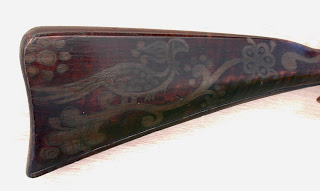
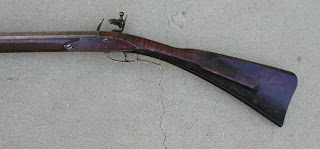
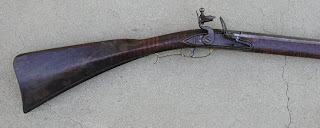
This rifle is stylistically representative of what historically was very likely a common type of firearm: frequently referred to as a "common rifle," "barn gun" etc., it is essentially nothing more than a rudimentary lock, stock and barrel. This particular piece evidences a combination of professional gunstocking with secondary folk-art decorative details and the overall effect which I have striven for is of a plain rifle roughed-out by a trained gunsmith and sold as-is to any of the countless poor farming families which historically inhabited Pennsylvania's Lehigh Valley area ca. 1790-1800.
Many such serving rifles display this curious appearance, some having obviously been stained and finished in accordance with traditional gunstocking practice of the period but many also displaying what must surely be home-brewed finishing or decoration. The "Painted Rifle" is representative of the latter category. Such pieces typically have what I can only refer to as "ugly" finishes, likely a combination of raw linseed oil boiled with one of the various available earth pigments (freq. umbers - faster drying due to the manganese content) to effect coloration and finish in one step. Such oils are often seen to have been utilized on plain, utilitarian farmhouse furniture of the area as well. Somewhat less often, interesting antiques which can only be termed "folk-art" guns also come to light. Some surviving examples are known carrying horn and/or bone inlays of a decorative nature, "painted" finishes of various colors (often dark reds derived from sienna pigments or native red earths) and extremely rarely, traces of ink or dyes constituting a decorative design.
The particular rifle in question has been stained with a mild nitrate of iron stain (essentially "THE" historical stain in regards to maple) and furthermore has been decorated with designs common to the PA Deutsche of the period. The dyework was accomplished by virtue of both silver and copper nitrate and also iron gall ink (dark outlining), the dyes being photoreactive and darkening upon exposure to sunlight. Such dyes/stains are extremely stable and durable and are in the wood as opposed to merely sitting upon the surface. Covered by the protective finish of the rifle (cold-pressed linseed oil boiled with lead carbonate as dryer and a small amount of colophony resin - essentially a cheap brown varnish) the staining will likely endure as long as the rifle!
The piece was then aged, largely on a whim, in order to duplicate the appearance of a genuine antique. A careful study of original rifles on-hand for restoration work and the manner in which they themselves have aged over the course of 200 + years served largely to guide me in the creation of an authentic appearance rather than a modern interpretation of "aging." It was not my intention, however, to create an outright "fake" and therefore the inletting, lock internals etc. were not aged in any way in order also to preserve the functionality of the rifle. It was fully intended to withstand hard usage, primarily intended for someone who has always desired to use and original without the extreme cost and risk associated with such an undertaking.
This article originally appeared in Flintlock, a publication of the CLA.
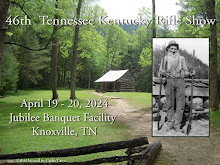

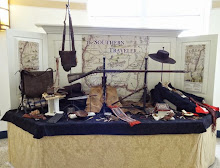





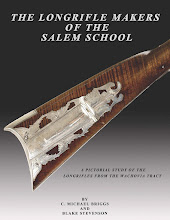

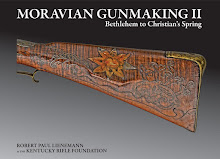


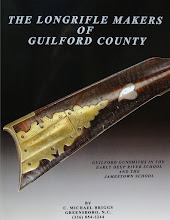

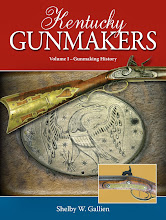









Of all of the rifles I have seen so far, this is the one I like best! I very much appreciate your keen interest in original finishes.
ReplyDeleteIf the owner of the rifle would bring it to the Lexington CLA show I would like very much to see in in hand...I'm sure others would as well.
Kudos!
S. Lalioff
I do not know who owns this gun, but will try and find out for you and will inquire if they will be bringing it to the CLA show in Lexington. J.
ReplyDeleteR.
Most intresting rifle I have ever seen,been looking for 50 plus years.Brilliant!
ReplyDelete